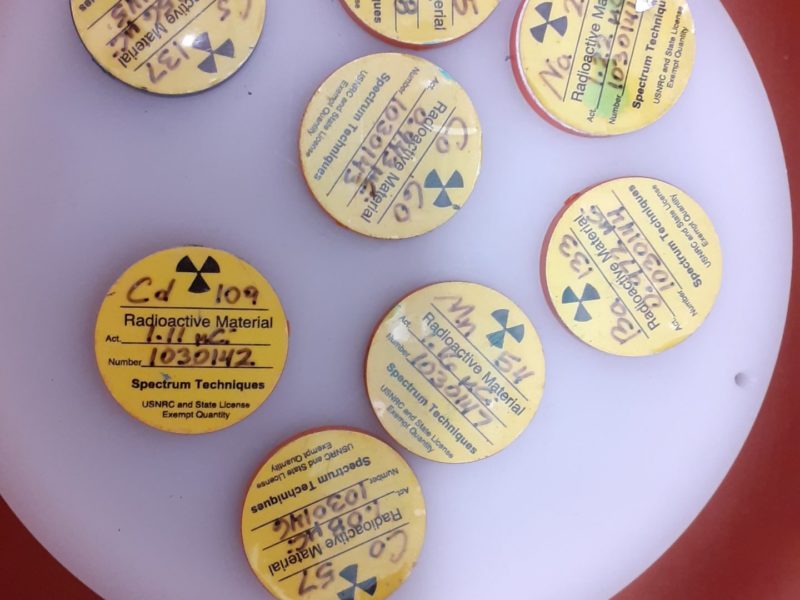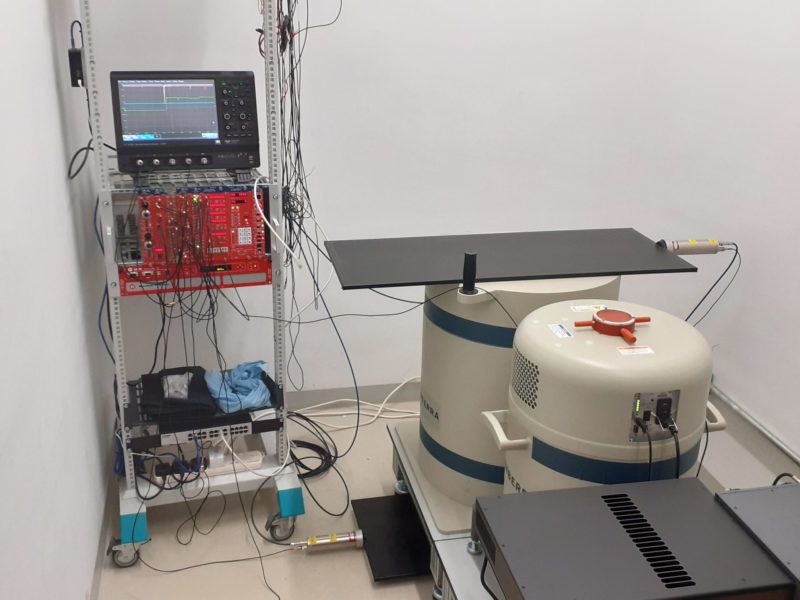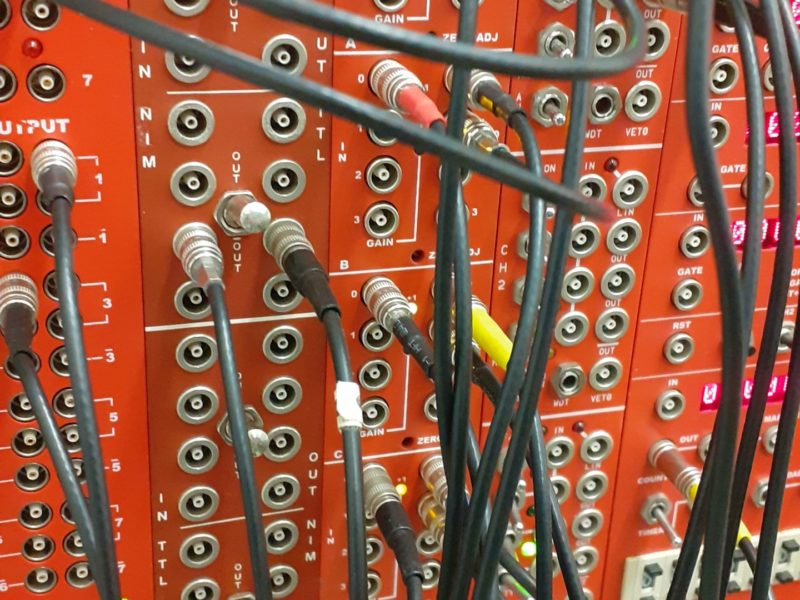Radioactivity Measurements
Radioactivity is one of the most common processes occurring in nature. Radioactive decays and particles shape and regulate our daily life: the Sun burns because of its nuclear fuel, the inner structure of our planet is hot because of radioactivity and even life has been subjected since its very primordial configuration to a never-ending flux of cosmic rays that might have played a predominant role in the evolution.
It's important to assess radioactivity in its forms: the exact knowledge of the environmental particle background of a specific site is often relevant for radio protection purposes, preventing operators being exposed to high doses of radiation. Safety limits have been established and internationally adopted.
The measurement of radioactivity is fundamental in science, especially when measuring very rare event (such as Dark Matter and Neutrino interactions), the background budget is the key contribution that needs to be taken into account when the detection strategy of a given process. For example, in Dark Matter searches using Time Projection Chambers immersed in liquified noble gases (i.e. XENON), the environmental neutron background, along with the precise knowledge of the Radon contamination, is instrumental for the significance of the experimental discoveries.
The role of the background in an experiment aiming at detecting very rare processes is so critical that a screening campaign might be required. One of the most common and powerful system to provide a thorough activity assessment of a component is based on then use of High Purity Germanium (HPGe) detectors. This technology provides high resolution spectral informations (making possible to recognition of a given radioactive isotope) and activity. For more coarse assessments (especially when the energy resolution is not a concern), Tallium-doped sodium iodine (NaI(Tl)) detectors can be used.
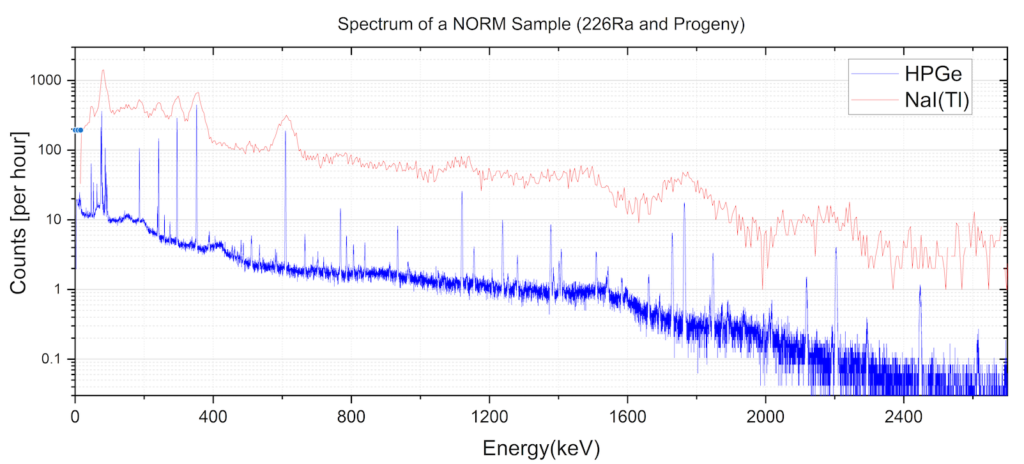
Gamma-ray spectrum of a NORM (Naturally Occurring Radioactive Materials) sample taken with a NaI detector (Red Line) and a Ge detector (Blue line).
The working principle of a gamma-ray detector is based on the conversion of the energy released in the interaction into some detectable signal (flashes of light, charge/voltage pulses, ...). The output is in general proportional to the energy released and such information can be used to build up the so called energy spectrum. By knowing the energy of the gamma emitted in a specific process of a given isotope, it is possible to calibrate the detector by constructing a function that translates the signal output into deposited energy.
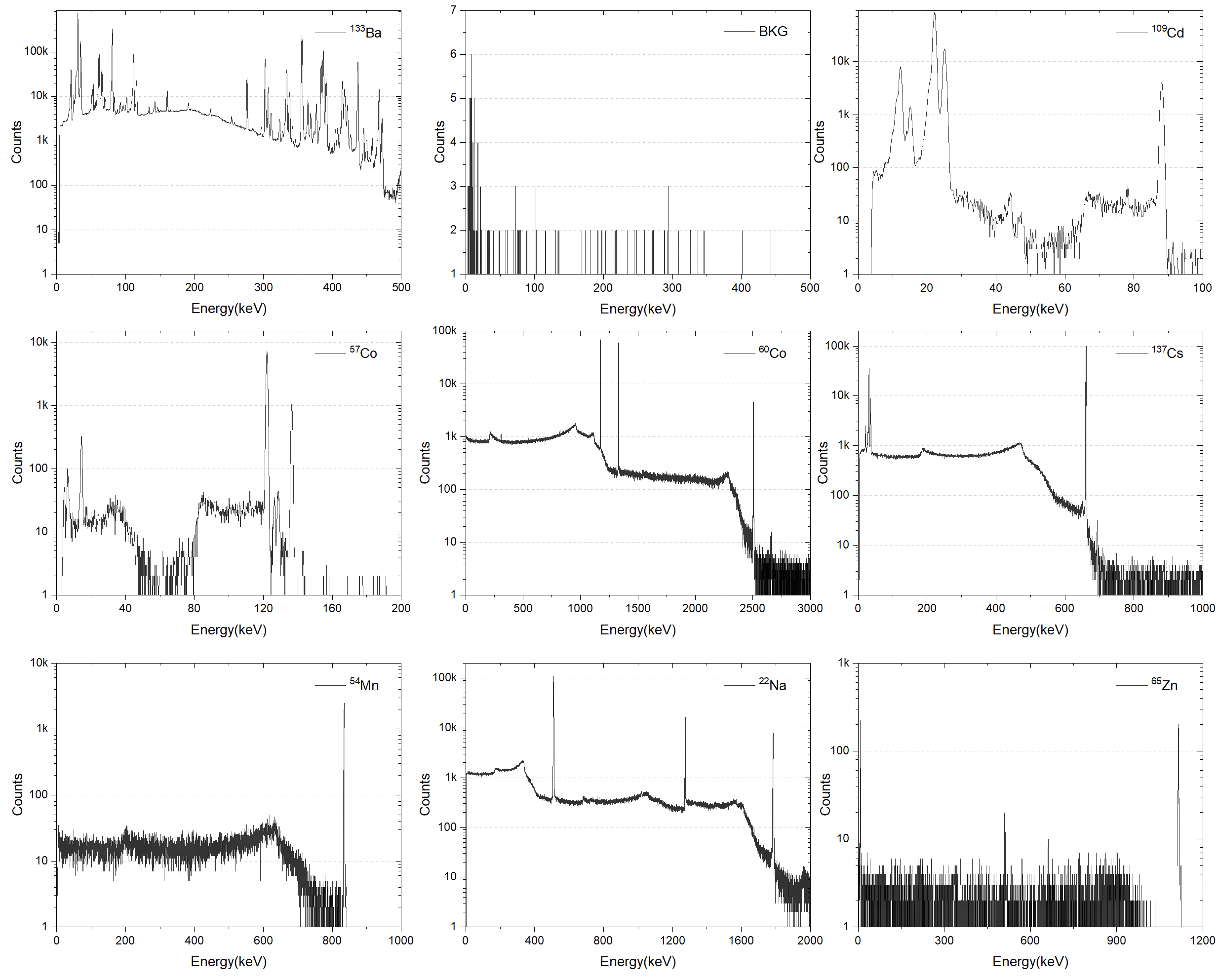
Energy spectra (20 minutes acquisition) of a set of isotopes (and background) used to perform the energy calibration of the HPGe.
